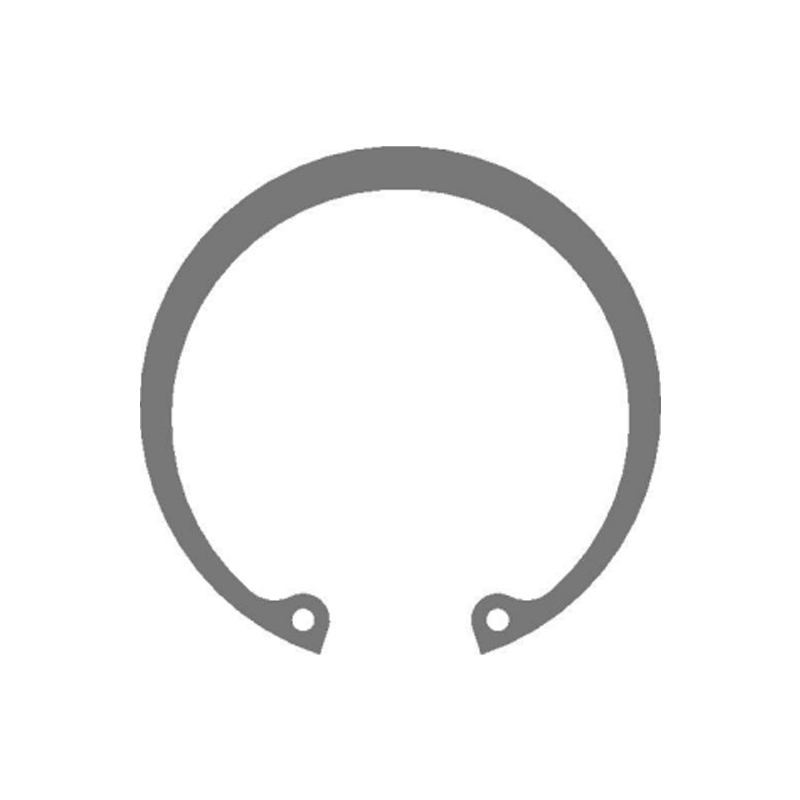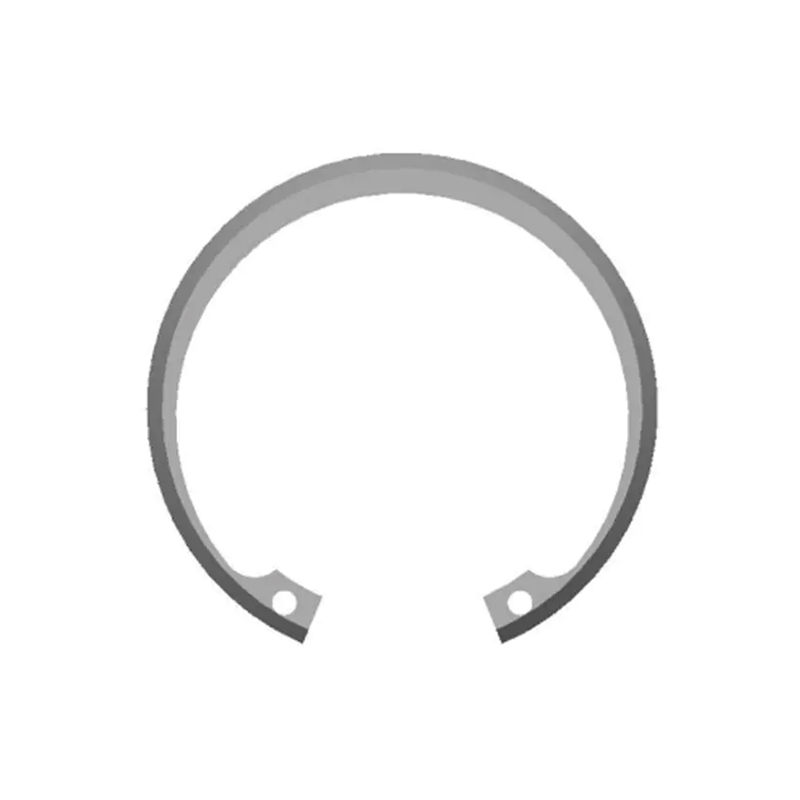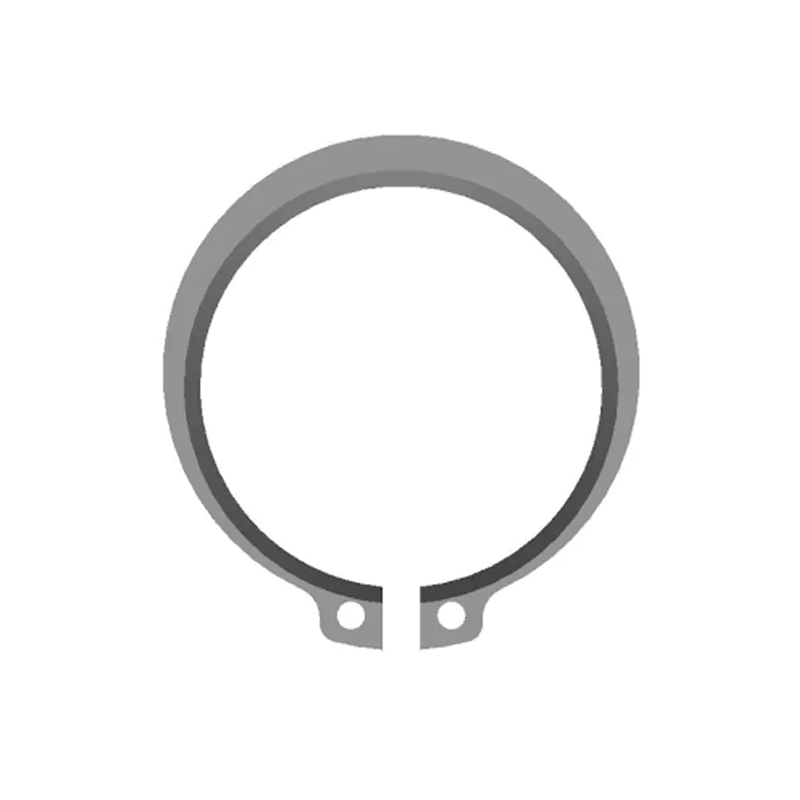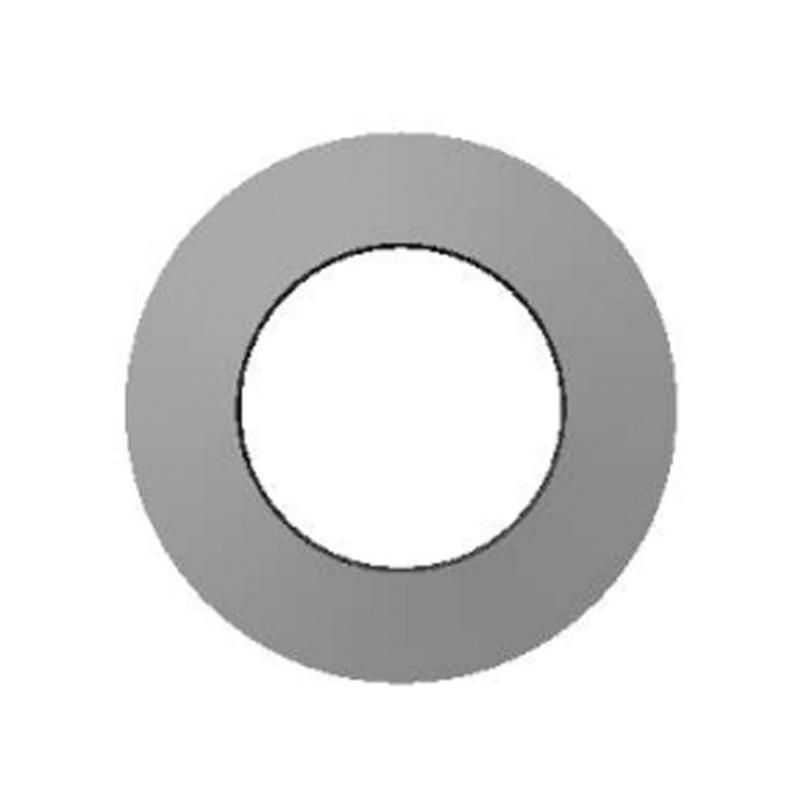In the intricate world of mechanical engineering, where reliability and precision are paramount, stamping circlips — also known as stamped retaining rings or snap rings — play a crucial yet often underappreciated role. These small, circular fasteners, typically manufactured from thin metal sheets using high-precision stamping techniques, are designed to secure components onto shafts or within housings, ensuring axial positioning without the need for threaded fasteners or complex machining.
Unlike their wire-formed counterparts, which are bent into shape, stamping circlips are formed through a cold-forming process that allows for greater design flexibility, tighter tolerances, and enhanced load-bearing characteristics. Their ability to be mass-produced at low cost while maintaining structural integrity has made them indispensable across automotive, aerospace, industrial machinery, and consumer electronics sectors.
This article explores the manufacturing principles, functional advantages, material considerations, and expanding applications of stamping circlips, highlighting their growing importance in modern mechanical systems.
Manufacturing Process and Structural Design
Stamping circlips are produced using progressive die stamping technology, in which flat sheet metal is fed through a series of tooling stations that cut, form, and shape the final component with high repeatability. This method enables manufacturers to produce thousands of identical parts per hour while maintaining tight dimensional control.
Key design features include:
Segmented or Full-Circle Configurations : Depending on the application, circlips may have an open gap for installation or a full 360-degree ring with a split for compression fitting.
Internal or External Retention Profiles : Internal circlips fit into grooves inside a bore, while external types sit on a shaft to retain components.
Retention Tabs or Lugs : Some designs incorporate small protrusions or holes that allow for easy removal using specialized pliers or tools.
Surface Treatments : Options such as zinc plating, phosphate coating, or black oxide enhance corrosion resistance and reduce friction during installation.
The stamped construction allows for integration into compact assemblies where space constraints make traditional fasteners impractical.
Functional Advantages Over Alternative Retaining Methods
Compared to other fastening solutions like threaded nuts, adhesives, or wire circlips, stamping circlips offer several distinct benefits :
Cost-Effective Production : The high-speed stamping process significantly reduces unit costs, especially in large-volume production runs.
Space Efficiency : Designed to operate within minimal axial space, making them ideal for miniaturized or densely packed assemblies.
Ease of Installation and Removal : Unlike threaded fasteners, they require no tightening torque and can be installed quickly using automated feeders or manual tools.
High Load Capacity : When properly seated in a machined groove, these rings provide reliable axial retention even under dynamic loading conditions.
Vibration Resistance : The radial grip of the stamped profile helps maintain position in environments prone to mechanical shock or oscillation.
These advantages make stamping circlips particularly valuable in applications where disassembly is required for maintenance or repair.
Material Selection and Performance Considerations
Material choice plays a pivotal role in determining the performance characteristics of stamping circlips. Common options include:
Carbon Steel : Offers high strength and wear resistance; often used in heavy-duty mechanical systems.
Stainless Steel (Austenitic or Martensitic Grades) : Preferred in corrosive environments such as marine, chemical processing, or food-grade equipment.
Phosphor Bronze : Selected for its electrical conductivity and low-friction properties, commonly found in motor and bearing applications.
Plated Alloys : Coatings such as zinc, nickel, or chrome improve corrosion resistance and aesthetics in visible components.
Each material selection must account for factors such as operating temperature, exposure to moisture or chemicals, and expected service life.
Applications Across Diverse Industries
Due to their versatility and efficiency, stamping circlips are widely adopted across multiple industries:
1. Automotive Industry
Used extensively in transmissions, differentials, steering systems, and suspension assemblies to retain bearings, gears, and bushings.
2. Industrial Machinery
Integral in hydraulic cylinders, gearboxes, and motor-driven equipment where precise component alignment and retention are critical.

3. Electronics and Appliances
Employed in motors, fans, and rotating components within home appliances and consumer electronics to ensure compact and reliable assembly.
4. Aerospace and Defense
Utilized in actuation systems, landing gear mechanisms, and avionics modules where weight reduction and reliability are essential.
5. Medical Devices
Found in surgical instruments and diagnostic equipment where ease of sterilization and quick disassembly are important.
Their adaptability to both static and dynamic loads ensures continued demand across a broad spectrum of mechanical systems.
Integration with Smart Manufacturing and Automation
As manufacturing processes evolve toward greater automation and precision, stamping circlips are increasingly being integrated into robotic assembly lines and smart fastening systems :
Automated Feeding Systems : Vibratory bowl feeders and linear track systems enable rapid, error-free insertion of circlips into subassemblies.
Quality Inspection Technologies : Vision systems and sensors verify correct installation and orientation in real time.
Design for Manufacturability (DFM) : Engineers optimize circlip groove dimensions and material choices early in product development to streamline production and reduce failure risks.
Predictive Maintenance Integration : In high-value equipment, embedded sensors monitor stress levels and wear patterns around circlip-retained components to anticipate failures before they occur.
These advancements contribute to higher throughput, improved reliability, and reduced downtime in advanced manufacturing environments.
Challenges and Limitations
Despite their many benefits, stamping circlips are not universally applicable. Key challenges include:
Groove Machining Requirements : Proper function depends on precisely machined grooves in the mating shaft or housing, adding complexity to component design.
Load Limitations : While suitable for moderate axial forces, they may not perform well under extreme radial or torsional stresses.
Corrosion Vulnerability : Without proper coatings or material selection, exposure to moisture can lead to premature degradation.
Installation Errors : Improper seating or damage during installation can compromise retention and lead to system failure.
Careful engineering and quality control are essential to ensuring long-term performance.
Innovations and Future Trends
Looking ahead, ongoing research and development efforts are focused on improving the efficiency, durability, and adaptability of stamping circlips:
Advanced Surface Treatments : Nano-coatings and self-lubricating finishes aim to extend service life and reduce wear.
Additive Manufacturing Integration : Experimental use of 3D-printed tooling for prototype and low-volume circlip production.
Hybrid Retaining Solutions : Combining stamped circlips with adhesive bonding or overmolding for multi-functional fastening.
Smart Fastener Concepts : Development of embedded RFID tags or strain-sensitive materials for condition monitoring and traceability.
These innovations reflect a broader shift toward smarter, more resilient mechanical fastening systems capable of meeting the demands of next-generation engineering.

















